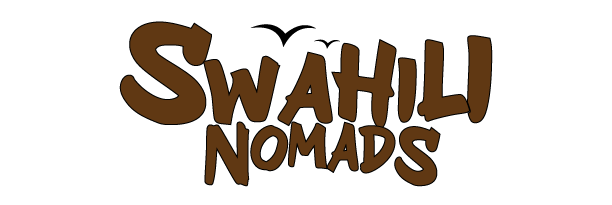🏔️ Mount Kilimanjaro: Expert Insights & Climbing Guide
Mount Kilimanjaro is the tallest mountain in Africa (5,895m / 19,341 ft) and the highest free-standing mountain in the world. It’s a bucket-list adventure for climbers, requiring no technical mountaineering skills but demanding endurance, preparation, and the right strategy to succeed.
📌 Fast Facts About Kilimanjaro
✔ Location: Northern Tanzania, near the Kenyan border
✔ Height: 5,895m (19,341 ft)
✔ Number of Climbers Per Year: 50,000+
✔ Success Rate: 50% – 90% (varies by route & days taken)
✔ Climate Zones: Rainforest 🌳 → Moorland 🌿 → Alpine Desert 🏜️ → Arctic Summit ❄️
✔ First Summit: 1889 (Hans Meyer & Ludwig Purtscheller)
✔ Nicknames: “The Roof of Africa”
🏕️ Climbing Routes & Which One to Choose
Mount Kilimanjaro has 7 main trekking routes, each offering unique challenges. The longer routes provide better acclimatization and higher success rates.
| Route | Duration | Difficulty | Success Rate | Scenery | Crowd Level |
|---|---|---|---|---|---|
| Marangu (Coca-Cola Route) | 5-6 days | Moderate | 50% – 60% | Good | High (Popular) |
| Machame (Whiskey Route) | 6-7 days | Challenging | 70% – 80% | Excellent | High |
| Lemosho | 7-8 days | Moderate | 85% – 90% | Stunning | Medium |
| Northern Circuit | 9-10 days | Moderate | 90%+ | Spectacular | Low (Remote) |
| Rongai | 6-7 days | Moderate | 70% – 80% | Good | Low (Drier Route) |
| Umbwe | 5-6 days | Very Difficult | 40% – 50% | Beautiful | Very Low (Steep) |
| Shira | 7-8 days | Challenging | 80%+ | Great | Medium |
✅ Best for Success Rate: Northern Circuit, Lemosho
✅ Best for Scenic Views: Lemosho, Machame
✅ Best for Beginners: Marangu (but low success rate due to rapid ascent)
✅ Best for Avoiding Crowds: Northern Circuit, Rongai
🏔️ Altitude Sickness & Acclimatization Strategies
🚨 Biggest challenge: Altitude sickness (Acute Mountain Sickness – AMS).
- Symptoms: Headache, nausea, dizziness, shortness of breath.
- Serious Cases: HAPE (fluid in lungs) & HACE (brain swelling) require immediate descent.
🩺 Prevention Tips:
✔ Take a longer route (7+ days) – More time = better acclimatization.
✔ Go “Pole Pole” (Slowly, Slowly) – Walk at a steady, slow pace.
✔ Hydrate (3-4 liters per day) – Helps prevent altitude sickness.
✔ Climb High, Sleep Low – Improves oxygen adjustment.
✔ Consider Diamox (Acetazolamide) – Helps with altitude adaptation (ask your doctor).
✔ Listen to Your Body – If symptoms worsen, descend!
📌 Fun Fact: About 10-20% of climbers experience mild AMS, but serious cases (HAPE/HACE) are rare if you acclimatize properly.
🕒 Best Time to Climb Kilimanjaro
| Season | Best Months | Weather | Crowds |
|---|---|---|---|
| Dry Season (Best Time to Climb) | Jan – March, June – October | Clear skies, less rain | High |
| Rainy Season (Avoid) | April – May, Nov | Slippery trails, low visibility | Low |
✅ January – March – Less crowded, colder nights.
✅ June – October – Most popular, warmest weather.
❌ April, May, November – Heavy rain, difficult conditions.
🛍️ Packing List: Essential Gear for Kilimanjaro
✔ Clothing (Layering is Key!)
- Base Layer: Moisture-wicking thermal shirt & leggings.
- Mid Layer: Fleece or down jacket.
- Outer Layer: Waterproof & windproof jacket + pants.
- Gloves & Hat: Protect against summit night cold (-20°C / -4°F).
- Hiking Boots: Waterproof, broken-in before the trek.
✔ Other Essentials
- Trekking Poles – Reduce knee strain.
- Headlamp – Crucial for summit night.
- Sleeping Bag (-10°C to -20°C rated) – For cold nights.
- Sunscreen & Lip Balm – The sun is intense at high altitudes.
- Hydration System (CamelBak + Bottles) – Staying hydrated is critical.
💰 Cost of a Kilimanjaro Climb
| Budget Level | Price (Per Person) | Includes |
|---|---|---|
| Budget | $1,800 – $2,500 | Basic gear, shared tents, standard food. |
| Mid-Range | $2,500 – $4,000 | Better food, good tents, professional guides. |
| Luxury | $4,500 – $7,000+ | Large private tents, gourmet meals, hot showers. |
✅ What’s Included?
- Park fees, guides, porters, food, tents, and permits.
❌ Not Included: Flights, tips ($200-$300 per climber), gear rentals.
🧑🤝🧑 Ethical Climbing: Choosing the Right Tour Operator
📌 Important: Always choose an operator that treats porters fairly! Look for KPAP (Kilimanjaro Porters Assistance Project) certified companies.
Top Kilimanjaro Operators (Ethical & Reliable)
🔹 Alpine Ascents – Great for safety & acclimatization.
🔹 Easy Travel Tanzania – Top-rated & ethical.
🔹 Thomson Treks – Luxury treks with excellent guides.
🔹 Kiliwarriors Expeditions – High-end, private climbs.
🔹 Rongai Expeditions – Good budget option.
📌 Tip: Avoid ultra-cheap tours ($1,500 or less) – They often cut corners on safety & fair wages.
🌟 Summit Night: The Final Push to Uhuru Peak
🔹 Begins at midnight from Barafu Camp (4,673m / 15,331ft).
🔹 6-8 hours of steep trekking to Uhuru Peak.
🔹 Freezing cold (-10°C to -20°C / 14°F to -4°F).
🔹 Altitude sickness is most common here—stay hydrated & go slow!
🎉 Reaching the Summit:
✔ Sunrise at Uhuru Peak is a once-in-a-lifetime view.
✔ Spend 10-15 minutes at the top (thin air).
✔ Descend quickly to lower altitudes to avoid sickness.
🎯 Key Takeaways for Climbing Kilimanjaro
✅ Pick a Longer Route (7-9 Days) for higher success.
✅ Go Slow & Acclimatize Properly to avoid altitude sickness.
✅ Train in Advance (hiking, cardio, strength training).
✅ Pack Smart – Cold & altitude demand proper gear.
✅ Choose a Reputable Operator that treats porters fairly.

